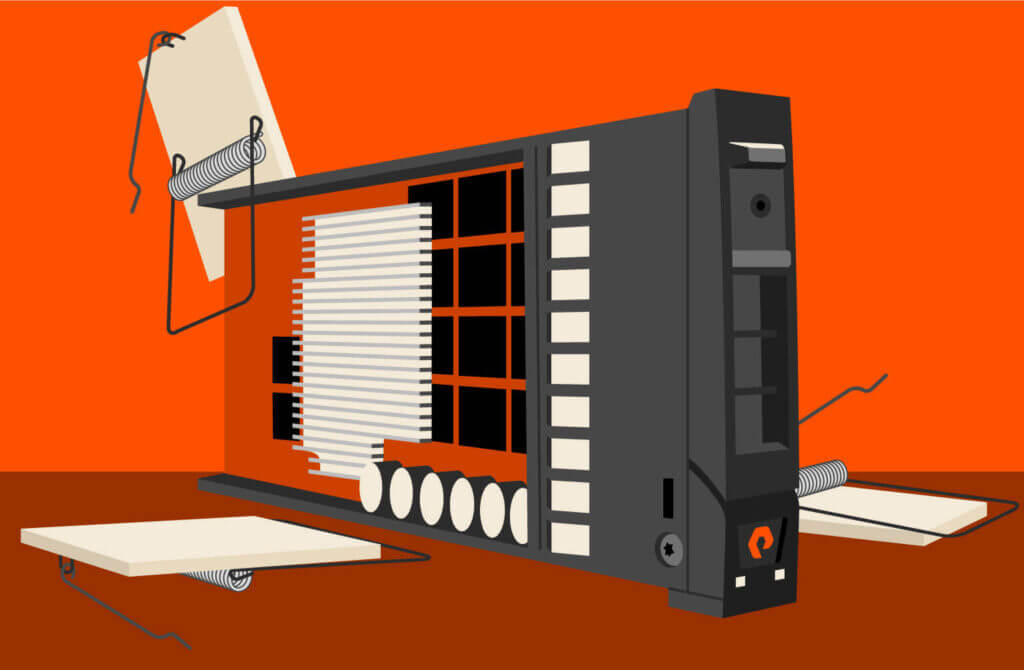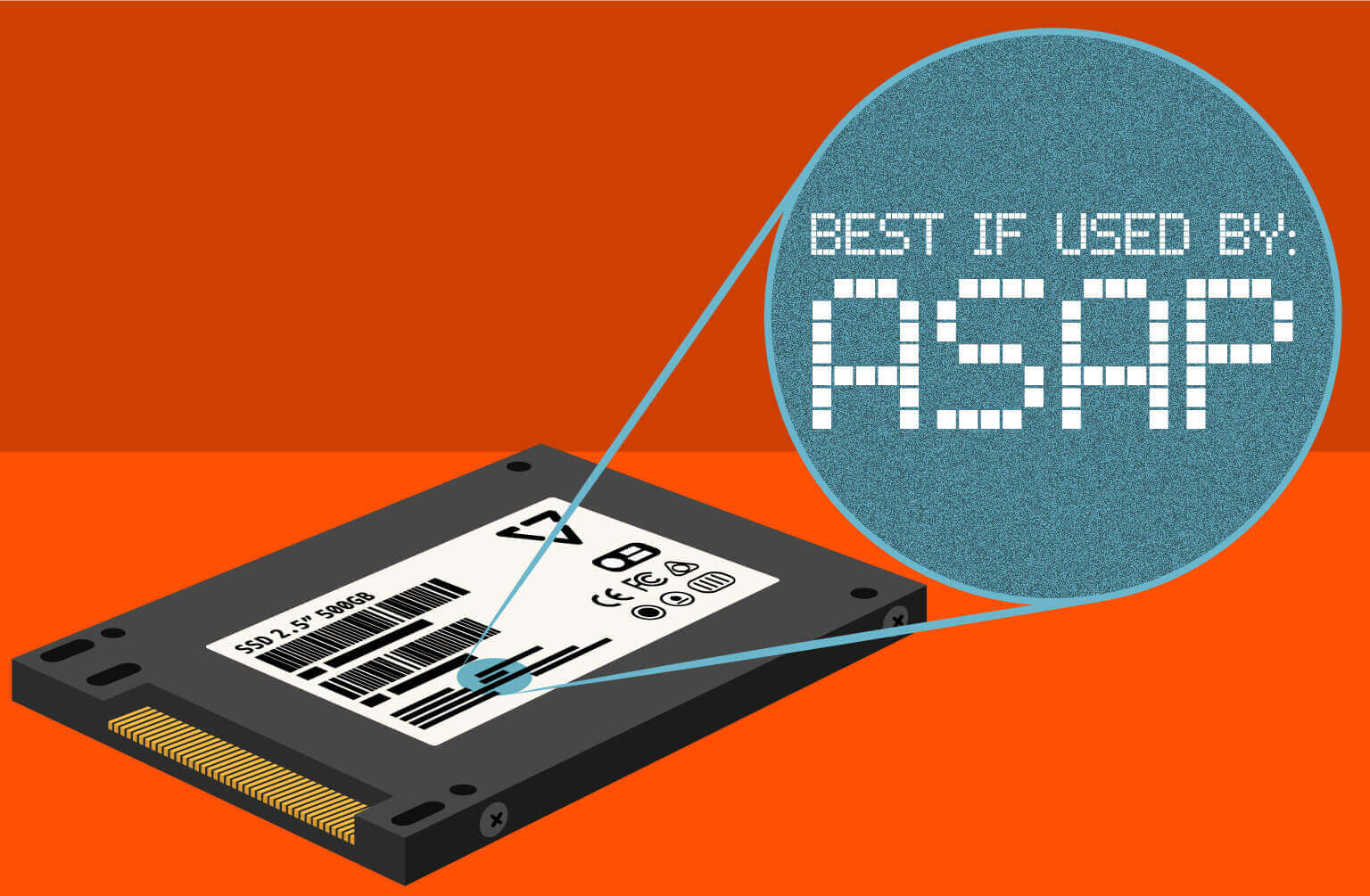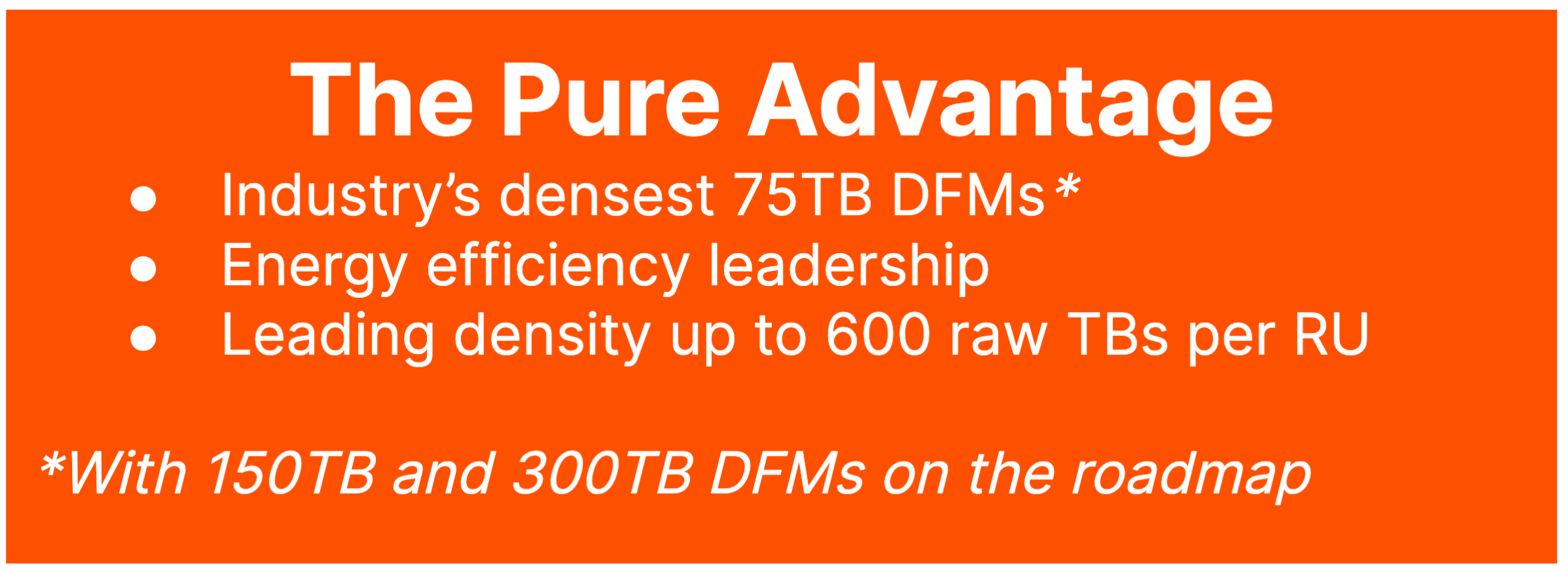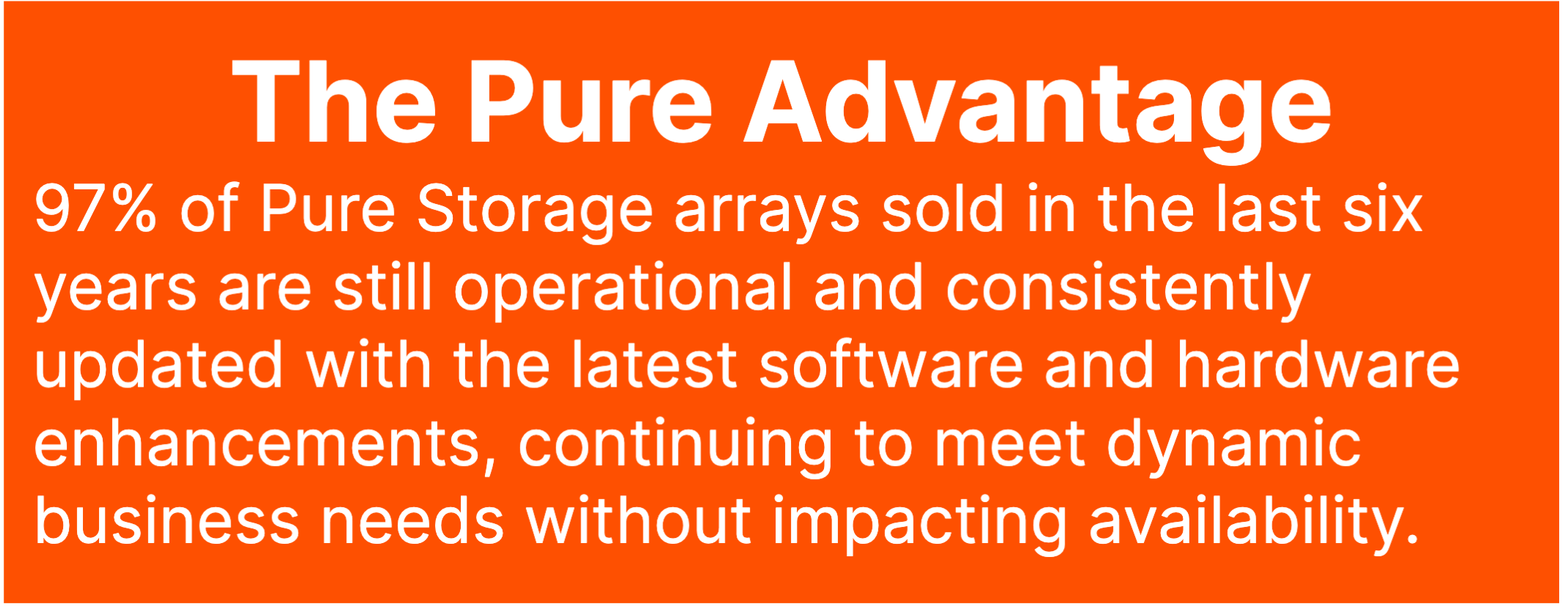Summary
While SDS startups promise modernity and agility, they’re hampered by the limitations of the traditional legacy storage lifecycle. The Pure Data Storage Platform is always modern and remains at the forefront of storage innovation, without disruptive upgrades.
So far in our “Beyond the Hype” blog series, we’ve touched on a broad range of topics that impact the customers’ outcomes. We covered the misconceptions about storage architecture. We unpacked the complexity of software-defined storage (SDS)-based startups and how the reliance on commodity SSDs is limiting the overall efficiency of most storage solutions.
However, there is another critical area where these storage solutions have proven as ineffective as legacy storage systems: their claims of being modern, simple, and flexible when in reality, they’re still plagued by traditional storage lifecycle challenges.
In today’s dynamic digital world, where innovation is constant and demands on storage infrastructure are ever-increasing, a future-proof storage platform that can continuously improve over time is critical. Storage needs to forever evolve and expand with business requirements, without requiring disruptive upgrades or painful operational overhead. In this installment, we’ll look at how, despite these claims of modernity, many SDS startups can’t deliver a truly modern experience. Then, we’ll look at how the reliability and innovation of the Pure Storage platform can.
Read More from This Series

The SSD Trap:

Demystifying Storage Complexity:

The Storage Architecture Spectrum:

Beyond the Hype:

Escaping the SSD Trap:

Is Your Storage Platform Really Modern?
Modern Storage, or Obsolete Legacy Storage Lifecycle behind a New Veneer?
One of the key priorities for IT leaders is to maximize performance and availability while reducing risk for their organization. All of this while adhering to their capital and operational cost envelopes. To accomplish this, their storage systems have to be simple to operate, be flexible to changing needs, and provide fully non-disruptive upgrades.
For decades, one of their biggest challenges has been the outdated storage lifecycle. Unfortunately, most storage startups have chosen to follow a “forklift” upgrade model similar to legacy storage systems. While this approach maximizes revenue for the storage companies, it also keeps customers trapped in a cycle of repurchasing entire storage capacities and managing through the risk of operational disruptions. These startups, while often marketing themselves as “hardware agnostic” and claiming “unmatched flexibility” and cost savings from commodity hardware, have failed to modernize the customer experience.
They also introduce some additional challenges:
- They fail to improve space and energy efficiency over time while maintaining performance.
- They introduce additional risk by mixing hardware across generations potentially impacting performance and usable capacity.
- Their solutions for scalability can be painful and disruptive.
- They fail to protect customers’ investments in storage capacity forcing a complete “rebuy” at the time of upgrade.

BUYER’S GUIDE, 14 PAGES
Reevaluating Your Virtualization Strategy?
Explore your options in our guide to modern virtualization.
Storage Improvements Are Challenging
In the last “Beyond the Hype” blog, “The SSD Trap: Enter Pure Storage’s DirectFlash Modules,” we covered in great detail the challenges of depending on commodity off-the-shelf (COTS) SSDs and the advantages of Pure Storage DirectFlash® Modules (DFMs). Specifically, we covered how these commodity-based SSD systems rely on third-party firmware as an interface between their controllers and the solid-state drives leaving them at the mercy of SSD vendor roadmaps. This greatly limits their ability to drive density and energy efficiency and also constrains their capacity to enhance performance, efficiency, density, and operational metrics over time.

In contrast, the Pure Storage platform features a future-proof architecture that ensures seamless innovation over time and has a proven track record of more than 30,000 non-disruptive hardware upgrades and hundreds of thousands of software upgrades all delivered with zero disruption to our customers’ business. In addition, Pure Storage is already shipping the industry’s largest 75TB DFMs. We’ve also announced 150TB and 300TB DFMs on the near-term roadmap which, when combined with our Purity flash operating system, enables customers to improve their power and space efficiency all while maintaining consistent performance.
Navigating the Upgrade Maze
Another limitation to consider with these SDS-based startups becomes clear as hardware ages over time within storage clusters. As requirements evolve, scaling up or updating these clusters frequently entails cumbersome support engagements and disruptive forklift upgrades. When a customer decides to do a disruptive forklift, they generally are buying completely new hardware for the solution installed, add it to the cluster, and then remove the old gear with zero value retained on the old gear in the transitional period. Additionally, when customers attempt to mix hardware in these storage solutions across multiple third-party vendors and technology generations, performance is invariably hampered by the older hardware in the cluster.
When vendors validate hardware solutions to marry to their SDS platform, generally they rely on the hardware vendor’s innovation to modernize the architecture. Undoubtedly when commercial off-the-shelf (COTS) vendor’s custom-built hardware is utilized, it usually takes longer to modernize this hardware, but when they do, it will be recommended to upgrade the whole environment to avoid any performance degradation and workload balance issues. In most cases, a complete forklift upgrade of all hardware is the only way to avoid these issues. Additionally, when larger drives are released to the market, hardware vendors eventually deprecate the older hardware, and mixing newer drive sizes (larger) to smaller drive sizes, protection schemas that are inherently built into platforms become increasingly cumbersome to maintain.

With a history of seamless upgrades and our commitment to hardware and software co-innovation, the Pure Storage platform ensures that customers can adapt to evolving storage needs without incurring significant capital outlay or compromising on reliability.
Networking Challenges
Scaling the new SDS-based storage systems can also prove challenging due to proprietary networking architectures and complex cabling designs. These fabrics often increase deployment complexities and increase points of failure, hindering an organization’s ability to expand its storage infrastructure efficiently. When additional components are included into an SDS-deployed solution, they bring along increased management points (IP addresses mainly), and this becomes a sprawling nightmare in maintaining large-scale clusters.
The Pure Storage platform has a proven track record of scaling clusters from single to multi-chassis without disruption with efficient network interconnects. Our hardware engineering provides organizations the ability to start small and scale in right-size increments and significantly extends the storage lifecycle with minimal network complexity.
Lack of Investment Protection
All the above limitations of these SDS solutions can be summarized as operational complexity and forced risk when upgrading/integrating next-generation hardware. These solutions offer limited investment protection requiring periodic complete capacity rebuys and painful “forklift” upgrades. When a customer buys their solution with the storage associated with it, in an SDS model, typically these are bought through another vendor as the SDS vendor does not supply the hardware.
When new hardware is brought onboard to the validated hardware list (HCL), there is little to no investment protection on anything bought prior, as the software vendor does not participate in this practice. The software can be ported to the new hardware added to an environment, but when customers are dealing with scaled unstructured environments, the hardware investment can be on average 40%-50% of the solution cost. If a customer needs to rebuy all of that hardware because the old hardware is obsolete, without any capacity change, that’s what we’d call terrible investment protection.

In contrast, the Pure Storage platform is always modern and remains at the forefront of storage innovation. Our software upgrades bring modern features all the way from the controller to the individual flash NAND and are engineered to drive efficiency as a system. All of these upgrades are done completely non-disruptively. Even the earliest Pure Storage customers back in 2011 have transitioned to next-generation technologies without ever compromising on performance, capacity, or reliability, delivering huge total cost of ownership (TCO) reduction.
The Future Is Evergreen
While SDS startups may promise modernity and agility, traditional storage lifecycle limitations and the absence of a future-proof architecture mean they often fall short in delivering against their promises. In contrast, the Pure Storage Evergreen® architecture keeps infrastructure modern with continuous non-disruptive upgrades of all components to improve performance and efficiency over time. The Pure Storage platform ensures organizations can adapt to evolving storage needs, ensuring their storage infrastructure will remain truly modern for years to come.

Written By:







